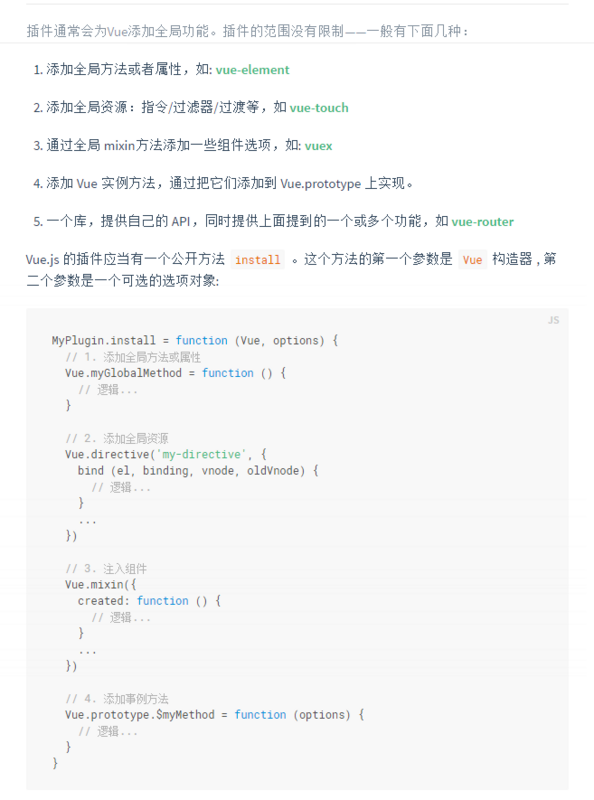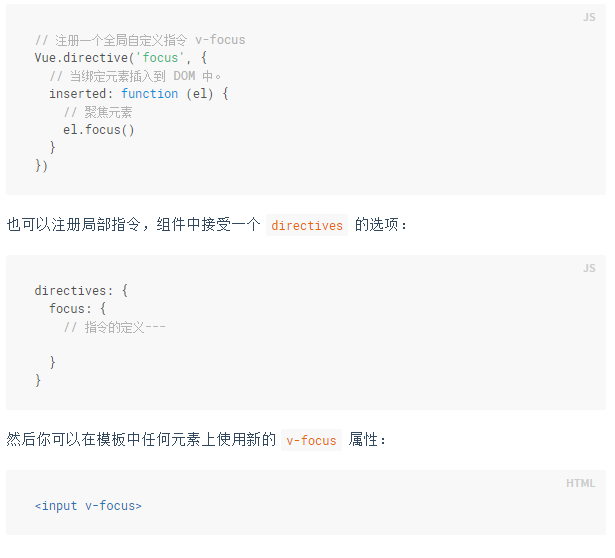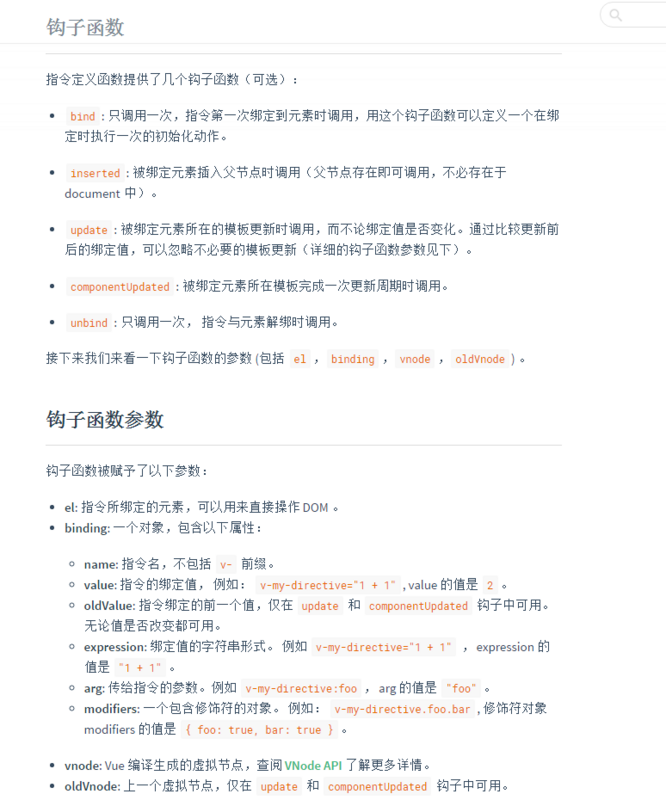va.js—The writing process of Vue form validation plug-in
Foreword
Some time ago, the boss set up the Vue development environment, so we happily came to Vue from JQ. During this period, I was not happy with the form verification. When I saw the plug-in chapter of Vue, I felt that I could write one, so I started writing a form verification plug-in va.js. Of course why not find a plug-in? vue-validator.
I thought about it. One is that form verification is a highly customized thing. In order to take into account the needs of various companies, this kind of plug-in found online adds a lot of functions, which we don’t need. It turns out that vue-validator is 50kb, and the va.js I wrote is only 6kb.
Another thing is that I really think the API of vue-validator is very long. It’s always v-validate:username="['required']", such a long list, and the call I designed is probably like - v-va :Money
Of course, this article only shows how to write a vue form validation plug-in that meets the needs of your company. The following introduces the ideas.
1. The composition of the form validation module
Any form validation module is composed of configuration - verification - error reporting - value collection.
Configuration: Configuration rules and configuration error reporting, as well as priority
Verification: There is verification in the change event, verification when the submit button is clicked, and of course there is also verification in the input event value
Error reporting: The error reporting method is generally points, the error text has a template, and also has a customized
value: Return the verified data to the developer for a call
The following is the request my boss made to me for the company project
Centralized management verification rules and error reporting templates.
The error reporting time is optional
The verified data has been packaged into objects and can be used directly
to allow each page to override the rules, customize the error reporting information, and allow ajax to obtain the data, and then The rules are supplemented
I asked curiously, why is it like this? Then the boss answered me one by one:
The advantage of centralized management rules and error reporting templates is that the rules can be used globally and can be changed once and for all. The boss told me that the regular nickname alone was changed three times. If these regular rules are written on each page, o( ̄ヘ ̄o#) hum, you will have to change N pages
PC and mobile processes are different. Many verifications on PC must be done in the change event or input event. Verification and error reporting, while mobile generally requires going to the submit button for verification. So be prepared when writing a plug-in. Then, the UI used for error reporting must be able to support the layer plug-in we are using now. Of course, the error UI may change in the future, so you understand.
Of course, in the jq era, our public form verification can complete the verification and collect all the data into one object. In this way, there is no need to get the value when using ajax. This plug-in of yours is going to achieve this effect
It turns out that jq’s public script, regular expressions and error reporting are all concentrated in one place, which is very convenient in many places. But it is not flexible enough when some pages need to be changed. Rules like RealName were first configured for a certain page, using the field names on the backend interface. On another payment page, the field name on the back-end interface has been changed to PayUser, but the regular expression is still RealName. It turns out that we need to overwrite RealName. This is not convenient and looks good. The other one, the payment amount, has maximum and minimum limits, which need to be obtained from the backend. You also need to consider this situation. It is necessary to have some flexibility on each page to modify rules, customize error reporting, etc.
After listening to it, I roughly understood it. It turned out that the jq form verification I wrote before had so many uncomfortable points. -_-|||Next, let’s take a look at the good things vue has given me. Let me write
Second, how to write a Vue plug-in
I am a Vue novice, why did I start writing a Vue plug-in? That’s because when I was thinking of a solution, I flipped through the Vue documentation and came here
these things. When I finished writing va.js, I felt that what you wrote was really clear.
Actually, I want to write a command to complete form verification. It turns out that there may be 2-3 instructions, and some methods need to be defined on Vue.prototype so that the rules can be expanded within each sub-instance. So the boss said, this is equivalent to a plug-in. This makes me feel like a whale.
va.js mainly uses Vue commands

These things, when I finished writing va.js, I felt that what you wrote was really clear.
Actually, I want to write a command to complete the form verification. It turns out that there may be 2-3 instructions, and some methods need to be defined on Vue.prototype so that the rules can be expanded within each sub-instance. So the boss said, this is equivalent to a plug-in. This makes me feel like a whale.
va.js mainly uses Vue instructions


Vue documentation is really written carefully, but let me add one more thing
vnode.context is an instance of Vue
When we are doing projects, we often There are N sub-components hanging on a root component, and N sub-components may be hung on the sub-components. The instance obtained by vnode.context is the instance of the component bound to the instruction. This is quite useful. You can do a lot of things
Of course you also use some Vue.prototype
Vue.prototype.$method is the method that can be called on each component. It can be called using this.$method inside the component

Hot AI Tools

Undresser.AI Undress
AI-powered app for creating realistic nude photos

AI Clothes Remover
Online AI tool for removing clothes from photos.

Undress AI Tool
Undress images for free

Clothoff.io
AI clothes remover

AI Hentai Generator
Generate AI Hentai for free.

Hot Article

Hot Tools

Notepad++7.3.1
Easy-to-use and free code editor

SublimeText3 Chinese version
Chinese version, very easy to use

Zend Studio 13.0.1
Powerful PHP integrated development environment

Dreamweaver CS6
Visual web development tools

SublimeText3 Mac version
God-level code editing software (SublimeText3)

Hot Topics
 Replace String Characters in JavaScript
Mar 11, 2025 am 12:07 AM
Replace String Characters in JavaScript
Mar 11, 2025 am 12:07 AM
Detailed explanation of JavaScript string replacement method and FAQ This article will explore two ways to replace string characters in JavaScript: internal JavaScript code and internal HTML for web pages. Replace string inside JavaScript code The most direct way is to use the replace() method: str = str.replace("find","replace"); This method replaces only the first match. To replace all matches, use a regular expression and add the global flag g: str = str.replace(/fi
 Custom Google Search API Setup Tutorial
Mar 04, 2025 am 01:06 AM
Custom Google Search API Setup Tutorial
Mar 04, 2025 am 01:06 AM
This tutorial shows you how to integrate a custom Google Search API into your blog or website, offering a more refined search experience than standard WordPress theme search functions. It's surprisingly easy! You'll be able to restrict searches to y
 8 Stunning jQuery Page Layout Plugins
Mar 06, 2025 am 12:48 AM
8 Stunning jQuery Page Layout Plugins
Mar 06, 2025 am 12:48 AM
Leverage jQuery for Effortless Web Page Layouts: 8 Essential Plugins jQuery simplifies web page layout significantly. This article highlights eight powerful jQuery plugins that streamline the process, particularly useful for manual website creation
 Build Your Own AJAX Web Applications
Mar 09, 2025 am 12:11 AM
Build Your Own AJAX Web Applications
Mar 09, 2025 am 12:11 AM
So here you are, ready to learn all about this thing called AJAX. But, what exactly is it? The term AJAX refers to a loose grouping of technologies that are used to create dynamic, interactive web content. The term AJAX, originally coined by Jesse J
 What is 'this' in JavaScript?
Mar 04, 2025 am 01:15 AM
What is 'this' in JavaScript?
Mar 04, 2025 am 01:15 AM
Core points This in JavaScript usually refers to an object that "owns" the method, but it depends on how the function is called. When there is no current object, this refers to the global object. In a web browser, it is represented by window. When calling a function, this maintains the global object; but when calling an object constructor or any of its methods, this refers to an instance of the object. You can change the context of this using methods such as call(), apply(), and bind(). These methods call the function using the given this value and parameters. JavaScript is an excellent programming language. A few years ago, this sentence was
 10 Mobile Cheat Sheets for Mobile Development
Mar 05, 2025 am 12:43 AM
10 Mobile Cheat Sheets for Mobile Development
Mar 05, 2025 am 12:43 AM
This post compiles helpful cheat sheets, reference guides, quick recipes, and code snippets for Android, Blackberry, and iPhone app development. No developer should be without them! Touch Gesture Reference Guide (PDF) A valuable resource for desig
 Improve Your jQuery Knowledge with the Source Viewer
Mar 05, 2025 am 12:54 AM
Improve Your jQuery Knowledge with the Source Viewer
Mar 05, 2025 am 12:54 AM
jQuery is a great JavaScript framework. However, as with any library, sometimes it’s necessary to get under the hood to discover what’s going on. Perhaps it’s because you’re tracing a bug or are just curious about how jQuery achieves a particular UI
 How do I create and publish my own JavaScript libraries?
Mar 18, 2025 pm 03:12 PM
How do I create and publish my own JavaScript libraries?
Mar 18, 2025 pm 03:12 PM
Article discusses creating, publishing, and maintaining JavaScript libraries, focusing on planning, development, testing, documentation, and promotion strategies.






